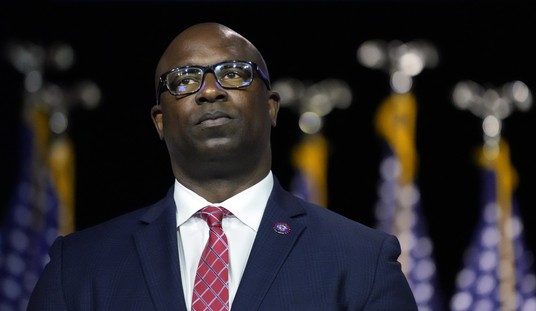It’s called “Medical Homelessness” and its just the latest Obamacare SNAFU to make anyone who purchased a policy from healthcare.gov or the state exchanges wonder about the sanity of lawmakers who voted for this monstrosity.
As was pointed out at the time Obamacare was passed, the United States currently has a shortage of primary care physicians — and it’s getting worse. By 2020, there will be 45,000 fewer primary care physicians than are needed — a problem exacerbated by the fact that most physicians do not accept Medicaid patients because of low reimbursement levels.
As Californians are discovering, thousands of doctors aren’t accepting any patients with an Obamacare policy.
While open enrollment for coverage under the Affordable Care Act is closed, many of the newly insured are finding they can’t find doctors, landing them into a state described as “medical homelessness.”
Rotacare, a free clinic for the uninsured in Mountain View, is dealing with the problem firsthand.
Mirella Nguyen works at the clinic said staffers dutifully helped uninsured clients sign up for Obamacare so they would no longer need the free clinic.
But months later, the clinic’s former patients are coming back to the clinic begging for help. “They’re coming back to us now and saying I can’t find a doctor, “said Nguyen.
Thinn Ong was thrilled to qualify for a subsidy on the health care exchange. She is paying $200 a month in premiums. But the single mother of two is asking, what for?
“Yeah, I sign it. I got it. But where’s my doctor? Who’s my doctor? I don’t know,” said a frustrated Ong.
Nguyen said the newly insured patients checked the physicians’ lists they were provided and were told they weren’t accepting new patients or they did not participate in the plan.
And Nguyen says – while the free clinic isn’t technically supposed to be treating former patents they signed up for insurance, they can’t in good faith turn them away.
Dr. Kevin Grumbach of UCSF called the phenomenon “medical homelessness,” where patients are caught adrift in a system woefully short of primary care doctors.
“Insurance coverage is a necessary but not a sufficient condition to assure that people get access to care when they need it,” Grumbach said.
Those who can’t find a doctor are supposed to lodge a complaint with state regulators, who have been denying the existence of a doctor shortage for months.
Meanwhile, the sick and insured can’t get appointments.
“What good is coverage if you can’t use it?” Nguyen said.
Ms. Nguyen has discovered the secret of Big Government. Obamacare is a Potemkin Village, all pretty and enticing on the outside, but look behind it and you find nothing except high deductibles, bad coverage, and bewildering requirements.
And it’s only going to get worse, says Kaiser:
There are various reasons for the shortages. Certainly a big contributor is the aging of the baby boomers, who may still love rock ‘n roll but increasingly need hearing aids to enjoy it. The growing medical needs of that large age group are creating a huge burden for the existing health care workforce. The retirement of many doctors in the boomer cohort is compounding the problem.
The federal government estimates the physician supply will increase by 7 percent in the next 10 years. But the number of Americans over 65 will grow by about 36 percent, according to the U.S. Census Bureau.
Money also is a factor in the shortages. During the course of their careers, primary care physicians earn around $3 million less than their colleagues in specialty fields, which makes primary care a less appealing path for many medical students.
In mental health, the problem is that much of the work is in the public sector, where the pay is far less than it is for providers in other medical specialties, who tend to work in the private sector. As an example, according to the National Council for Behavioral Health, a registered nurse working in mental health earns $42,987 as compared to the national average for nurses of $66,530.
Valuing Work-Life BalanceBut financial factors are not the leading reason that medical students are avoiding primary care, Mitchell said. In surveys of medical students conducted by AAMC, students valued “work-life balance” more than money when they were choosing their specialties. Because primary care often involves long hours and night and weekend calls, it is far less desirable to this generation of students.
“Half of the physicians in training are women,” Mitchell said. “You find more of them are looking for a career that might be compatible with part-time hours, that don’t involve being on call. Men are more engaged in child care today, and they have similar concerns as they consider their career choices.”
Even before Obamacare was implemented, the statistics were grim for the newly insured:
According to the Health Resources and Services Administration, the federal agency charged with improving access to health care, nearly 20 percent of Americans live in areas with an insufficient number of primary care doctors. Sixteen percent live in areas with too few dentists and a whopping 30 percent are in areas that are short of mental health providers. Under federal guidelines, there should be no more than 3,500 people for each primary care provider; no more than 5,000 people for each dental provider; and no more than 30,000 people for each mental health provider.
So even if you’re lucky enough to find a doctor that treats those with Obamacare policies, chances are good to excellent you will wait forever for routine exams and services.
The problem is widespread but doesn’t affect everyone. California appears to be having major problems with their physician listings because insurance bureaucrats apparently placed doctors on the list who had no intention of participating in the Obamacare program:
Many independent and small-practice doctors throughout California are in for a rude awakening as they learn that Obamacare will require them to provide medical services without full financial reimbursement from the government. CBS San Francisco reports that the “Covered California” Obamacare exchange is now automatically enrolling doctors who not only never signed up for the program but never intended to because, ironically, they cannot afford to do so under the program’s reimbursement scheme.
KPIX 5’s ConsumerWatch recently interviewed some of the doctors whose names were suddenly appearing on the Covered California Exchange as providers, even though these doctors never actually signed up to be providers. Many of these doctors say they are witnessing a flood of new patients that they cannot afford to treat, because the Obamacare reimbursement scheme only covers a very small portion of the actual costs associated with medical treatments.
Unlike doctors who are associated with large medical groups, and in turn have more clout in negotiating higher reimbursement rates, independent physicians are getting the short end of the stick. It simply is not possible for these smaller providers to offer services to newly covered Obamacare recipients, for which only a very small fraction of the associated costs can be recuperated under the government insurance scam.
Even if Obamacare is repealed, the problems associated with a dearth of primary care physicians will continue. The ACA provided funding for the training of more primary care doctors, but the program was cut substantially to get the total cost of Obamacare under a trillion dollars (on paper).
However it is accomplished, the critical need for primary care physicians must be addressed in the near future or health care will decline even further than it has under Obamacare.









Join the conversation as a VIP Member